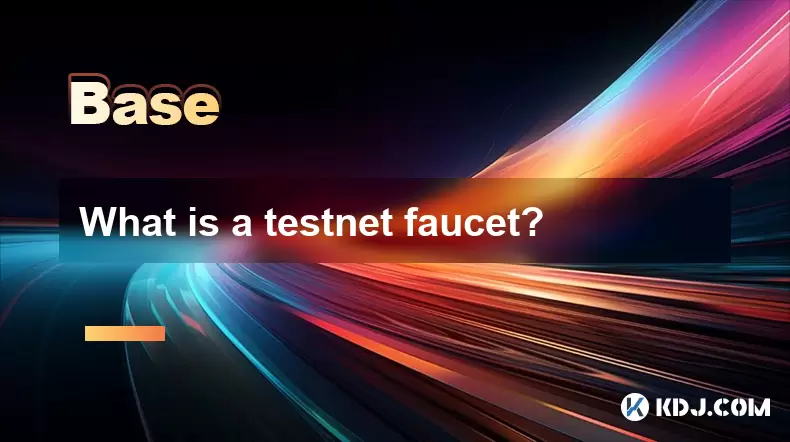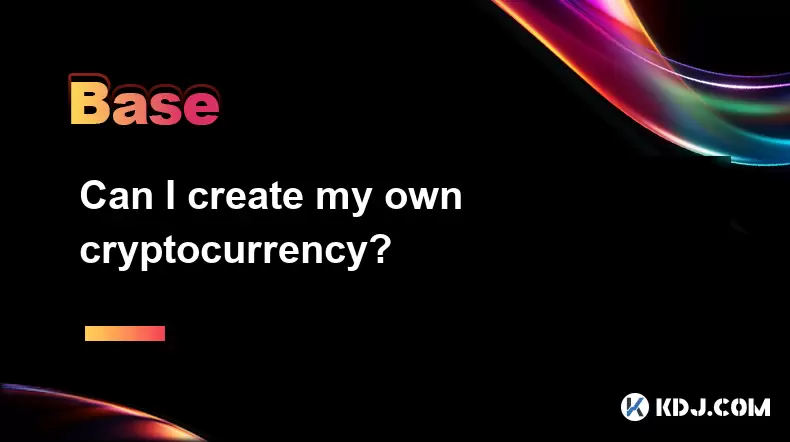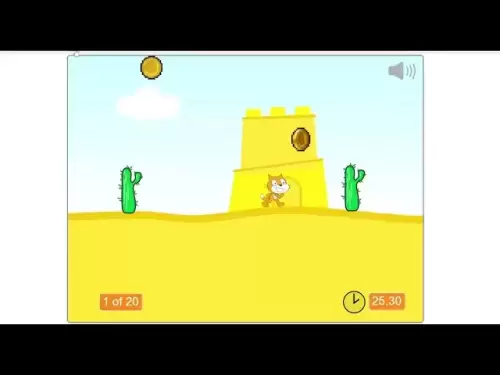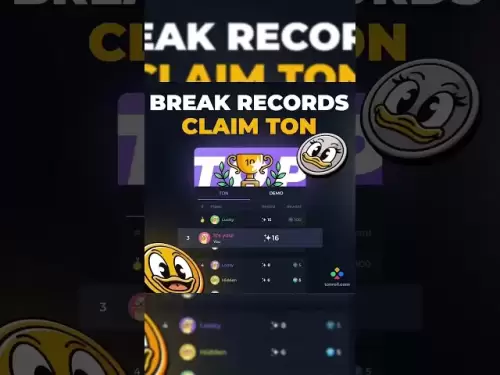-
 Bitcoin
Bitcoin $118100
0.44% -
 Ethereum
Ethereum $3765
5.84% -
 XRP
XRP $3.498
3.12% -
 Tether USDt
Tether USDt $1.000
0.00% -
 BNB
BNB $753.2
3.41% -
 Solana
Solana $181.7
3.58% -
 USDC
USDC $0.9999
0.01% -
 Dogecoin
Dogecoin $0.2704
12.75% -
 Cardano
Cardano $0.8684
5.85% -
 TRON
TRON $0.3151
-0.86% -
 Hyperliquid
Hyperliquid $46.06
4.51% -
 Stellar
Stellar $0.4695
2.48% -
 Sui
Sui $3.910
3.18% -
 Chainlink
Chainlink $19.36
6.65% -
 Hedera
Hedera $0.2750
3.99% -
 Bitcoin Cash
Bitcoin Cash $544.6
6.31% -
 Avalanche
Avalanche $25.12
3.69% -
 Shiba Inu
Shiba Inu $0.00001559
5.40% -
 Litecoin
Litecoin $116.8
5.10% -
 UNUS SED LEO
UNUS SED LEO $8.991
0.05% -
 Toncoin
Toncoin $3.283
2.79% -
 Polkadot
Polkadot $4.509
3.97% -
 Uniswap
Uniswap $10.67
6.58% -
 Ethena USDe
Ethena USDe $1.001
-0.01% -
 Monero
Monero $323.2
0.48% -
 Pepe
Pepe $0.00001410
6.37% -
 Bitget Token
Bitget Token $4.964
1.93% -
 Dai
Dai $0.9998
-0.01% -
 Aave
Aave $326.2
3.85% -
 Bittensor
Bittensor $421.8
2.46%
What is a testnet faucet?
A testnet faucet provides free test tokens for developers to safely test dApps and smart contracts on blockchain networks like Ethereum or BSC without using real funds.
Jul 09, 2025 at 10:21 am

Understanding the Basics of a Testnet Faucet
A testnet faucet is a tool used in blockchain development to distribute testnet tokens for free. These tokens are not valuable in real-world terms but serve a crucial role in testing decentralized applications (dApps), smart contracts, and other blockchain-based systems. Developers use testnets—replicas of mainnets—to simulate transactions and interactions without risking actual funds.
The primary function of a testnet faucet is to provide users with enough test tokens to perform multiple transactions on a testnet environment. This ensures that developers can thoroughly evaluate their projects under realistic conditions before launching them on a live network.
Testnet faucets help reduce barriers to entry by allowing anyone to access test tokens easily.
How a Testnet Faucet Works
A testnet faucet typically operates through a web interface or API where users can request a specific amount of test tokens. The process involves submitting a wallet address associated with a supported testnet. Once the request is processed, the faucet sends the designated number of tokens to that address.
Some faucets may require additional steps such as solving a CAPTCHA or connecting via social media accounts to prevent abuse. Others integrate directly with browser wallets like MetaMask, making the token claim process seamless.
- Visit the faucet website linked to the desired testnet (e.g., Ropsten, Goerli, Sepolia).
- Connect your wallet or enter your wallet address manually.
- Solve any verification challenges if required.
- Click the "Request Tokens" button.
- Wait for the transaction to confirm and check your wallet balance.
Each testnet has its own faucet system, so it's important to ensure compatibility before requesting tokens.
Why Developers Use Testnet Faucets
Developers rely heavily on testnet faucets during the development lifecycle of a blockchain project. Since deploying and interacting with smart contracts on a mainnet incurs gas fees, using testnets allows experimentation at no financial cost.
With sufficient test tokens from a faucet, developers can:
- Simulate user behavior
- Debug contract execution
- Evaluate transaction speeds
- Stress-test dApp interfaces
Testnet faucets enable comprehensive testing without exposing real assets to risk.
Additionally, testers and contributors can use these tools to verify bug fixes or participate in early-stage testing programs offered by various blockchain protocols.
Popular Blockchain Networks with Available Faucets
Many major blockchain platforms offer testnet faucets to support developer communities. Notable examples include:
- Ethereum: Goerli, Sepolia, and Ropsten testnets have active faucets.
- Binance Smart Chain: BSC Testnet provides a dedicated faucet for developers.
- Polygon: Mumbai testnet supports a faucet for Polygon-based application testing.
- Solana: Solana’s Devnet includes a command-line faucet for developers.
Each network maintains documentation on how to access and use its faucet effectively.
Users should always refer to official resources or community forums to locate legitimate faucet services and avoid phishing attempts or scams.
Security Considerations When Using a Faucet
While testnet faucets are generally safe, they pose potential risks if used carelessly. Users must never input sensitive information beyond what's necessary, such as private keys or recovery phrases.
It's essential to:
- Only use faucets from trusted sources
- Verify the URL matches the official site
- Avoid sharing personal data unnecessarily
- Use a separate wallet for testnet activities
Never connect a wallet containing real funds to a testnet faucet unless certain it's secure.
Misuse of faucets or falling victim to fake ones can lead to compromised wallets or exposure to malicious actors.
Frequently Asked Questions
Q: Can I earn real cryptocurrency from a testnet faucet?
No, testnet faucets only dispense tokens usable on test networks. These tokens hold no monetary value outside of testing environments.
Q: Why do some faucets stop working or become unavailable?
Faucets may be discontinued due to maintenance, network upgrades, or lack of funding. Always check community announcements or official repositories for updates.
Q: Is there a limit to how many times I can use a faucet?
Yes, most faucets impose cooldown periods between requests to prevent spamming and ensure fair distribution of test tokens.
Q: Do all blockchains have testnet faucets?
Not all, but most major networks provide faucet services. Some newer or niche chains might not yet have an accessible faucet system.
Disclaimer:info@kdj.com
The information provided is not trading advice. kdj.com does not assume any responsibility for any investments made based on the information provided in this article. Cryptocurrencies are highly volatile and it is highly recommended that you invest with caution after thorough research!
If you believe that the content used on this website infringes your copyright, please contact us immediately (info@kdj.com) and we will delete it promptly.
- Cardano (ADA) Price Surges Amid Bitcoin ATH Buzz: What's Next?
- 2025-07-21 12:30:11
- Bitcoin, UK, and Sale: Decoding the Crypto Buzz in Britain
- 2025-07-21 12:30:11
- NFT Performers in Flux: Pudgy Penguins, Courtyard, and the Shifting Sands of the Market
- 2025-07-21 10:30:12
- Decoding HKMA's Stablecoin Licensing System: A New Era for Digital Assets?
- 2025-07-21 10:50:11
- Address, CryptoPunks, NFTs: What's the Buzz?
- 2025-07-21 10:50:11
- Ethereum, Crypto, and Market Moves: What's the Deal?
- 2025-07-21 11:30:11
Related knowledge

What is the difference between a sidechain and a Layer 2?
Jul 20,2025 at 11:35pm
Understanding the Concept of SidechainsA sidechain is a separate blockchain that runs parallel to the main blockchain, typically the mainnet of a cryp...

What is the Inter-Blockchain Communication Protocol (IBC)?
Jul 19,2025 at 10:43am
Understanding the Inter-Blockchain Communication Protocol (IBC)The Inter-Blockchain Communication Protocol (IBC) is a cross-chain communication protoc...

How does sharding improve scalability?
Jul 20,2025 at 01:21am
Understanding Sharding in BlockchainSharding is a database partitioning technique that is increasingly being adopted in blockchain technology to enhan...

What is the "crypto trilemma" of scalability, security, and decentralization?
Jul 19,2025 at 06:28pm
Understanding the Concept of the Crypto TrilemmaThe crypto trilemma refers to the challenge of simultaneously achieving scalability, security, and dec...

What is a cliff and vesting schedule in tokenomics?
Jul 20,2025 at 10:28am
What Does a Cliff Mean in Tokenomics?In tokenomics, a cliff refers to a specific period during which token holders are not allowed to access or transf...

Can I create my own cryptocurrency?
Jul 20,2025 at 11:49pm
Understanding the Basics of Creating a CryptocurrencyYes, you can create your own cryptocurrency, but it involves a combination of technical knowledge...

What is the difference between a sidechain and a Layer 2?
Jul 20,2025 at 11:35pm
Understanding the Concept of SidechainsA sidechain is a separate blockchain that runs parallel to the main blockchain, typically the mainnet of a cryp...

What is the Inter-Blockchain Communication Protocol (IBC)?
Jul 19,2025 at 10:43am
Understanding the Inter-Blockchain Communication Protocol (IBC)The Inter-Blockchain Communication Protocol (IBC) is a cross-chain communication protoc...

How does sharding improve scalability?
Jul 20,2025 at 01:21am
Understanding Sharding in BlockchainSharding is a database partitioning technique that is increasingly being adopted in blockchain technology to enhan...

What is the "crypto trilemma" of scalability, security, and decentralization?
Jul 19,2025 at 06:28pm
Understanding the Concept of the Crypto TrilemmaThe crypto trilemma refers to the challenge of simultaneously achieving scalability, security, and dec...

What is a cliff and vesting schedule in tokenomics?
Jul 20,2025 at 10:28am
What Does a Cliff Mean in Tokenomics?In tokenomics, a cliff refers to a specific period during which token holders are not allowed to access or transf...

Can I create my own cryptocurrency?
Jul 20,2025 at 11:49pm
Understanding the Basics of Creating a CryptocurrencyYes, you can create your own cryptocurrency, but it involves a combination of technical knowledge...
See all articles

























































































